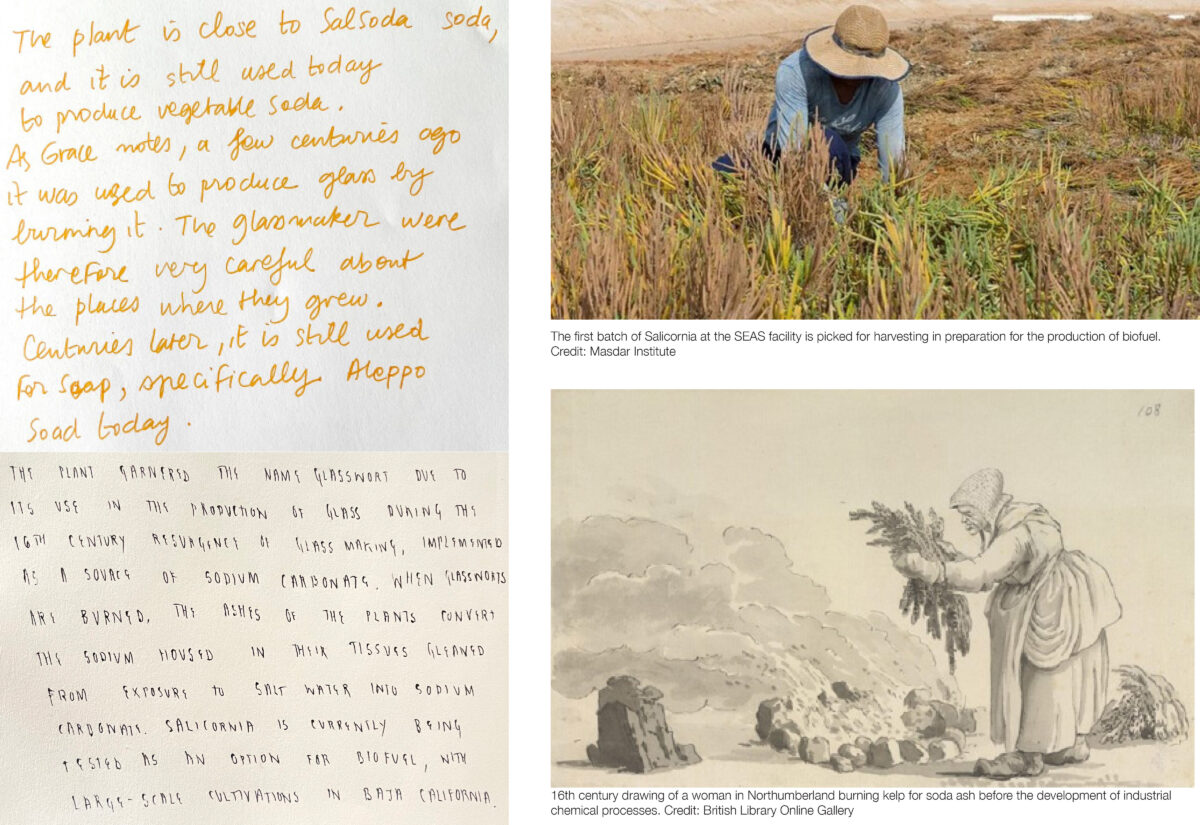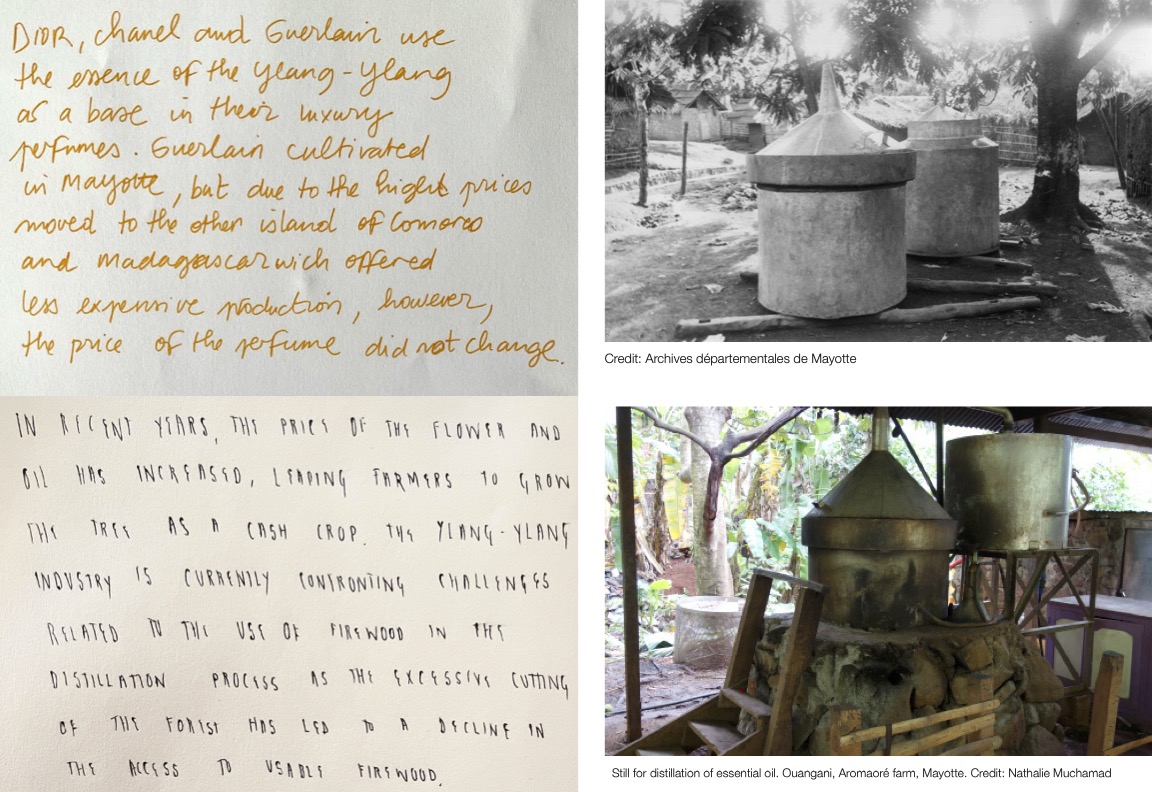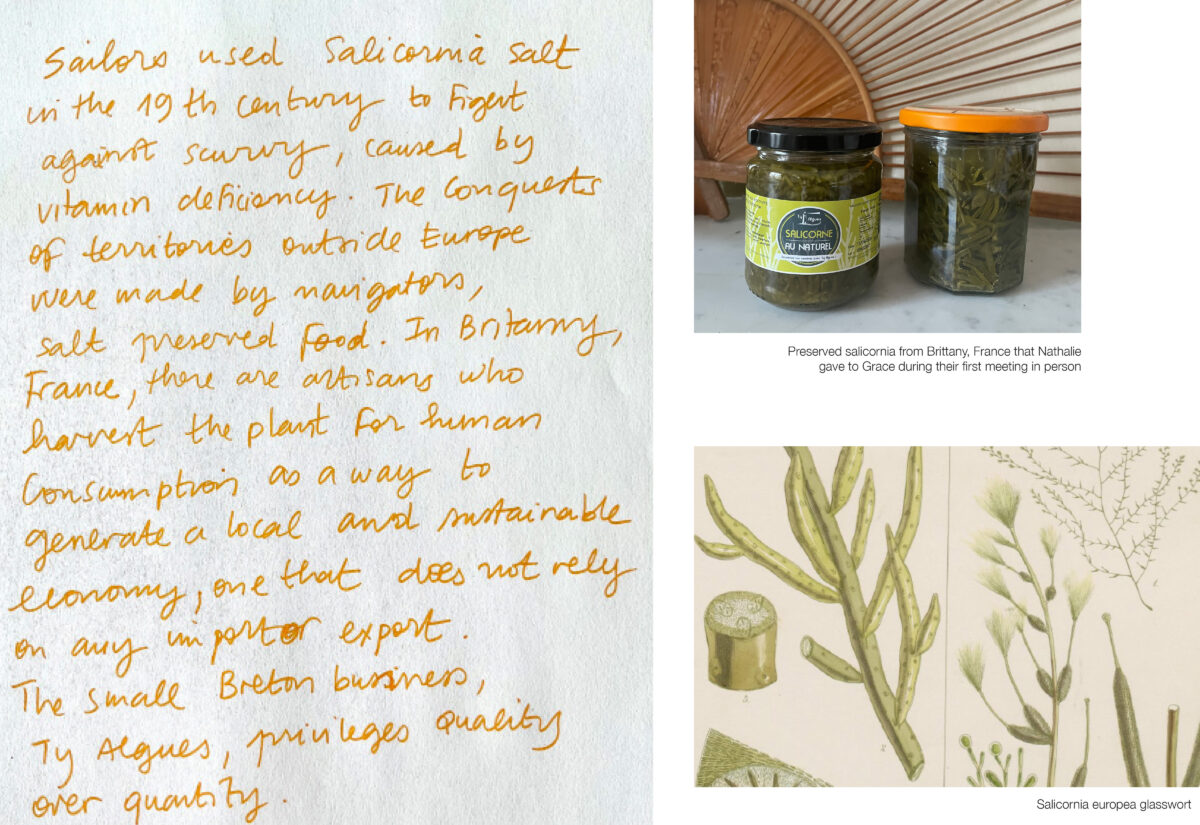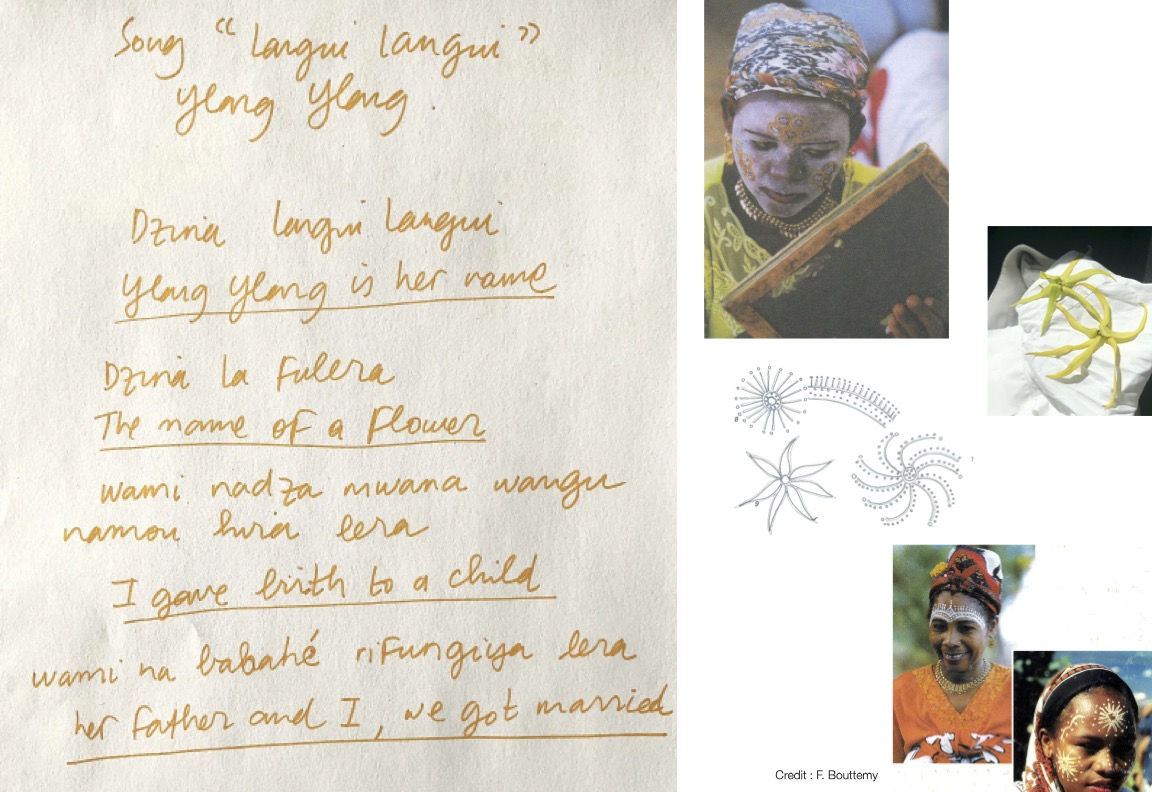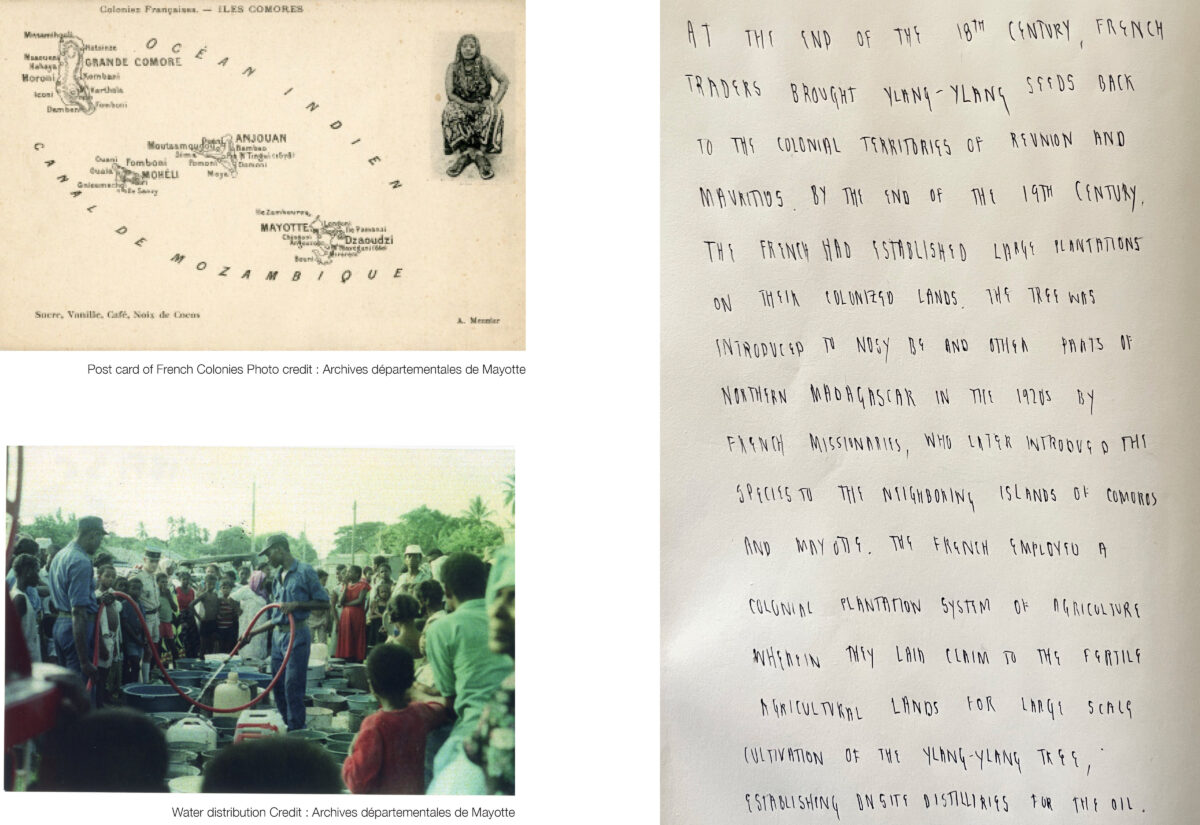Salicornia & Ylang Ylang
For Grace Gloria Denis and Nathalie Muchamad the plants that they follow connect them to family histories and entangle them in metabolic encounters with global fashion empires in the case of Ylang Ylang; and speculative futures for plants as biofuel with new Salicornia plantations opening in sensitive coastal areas.
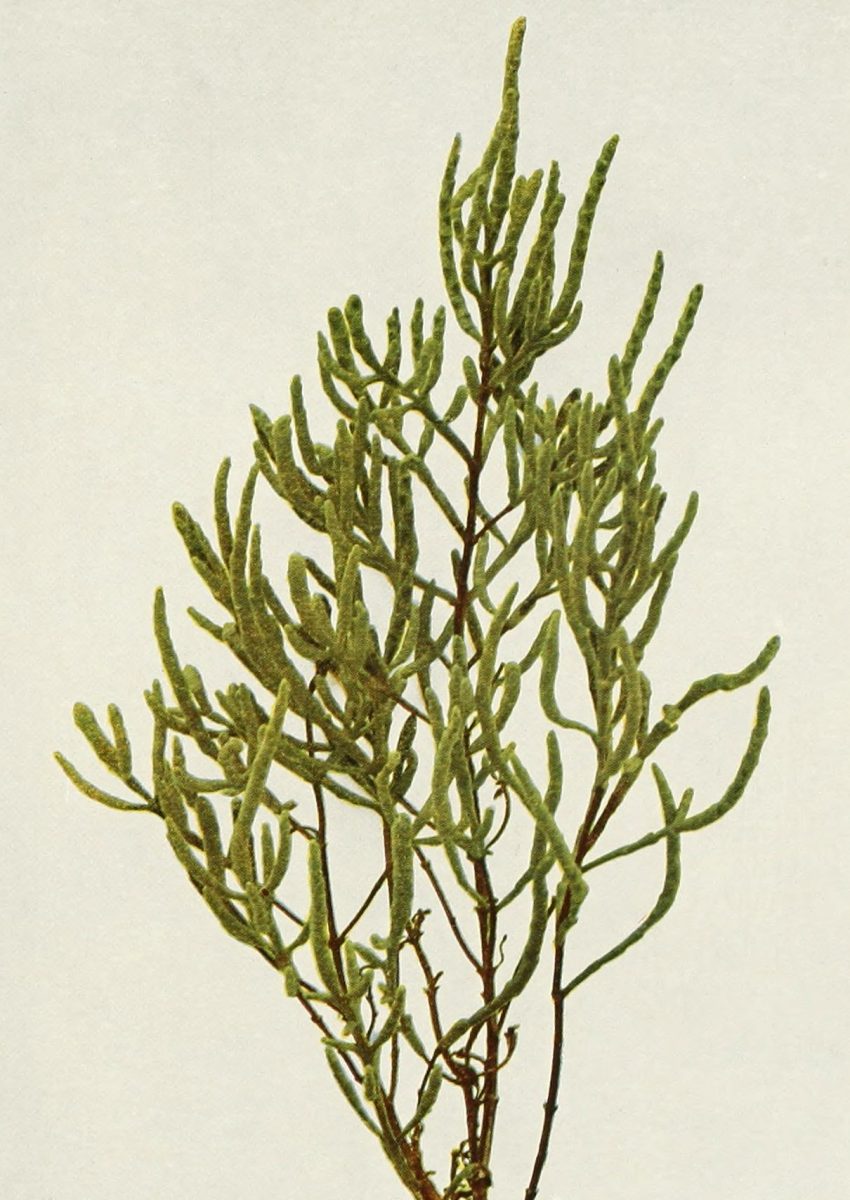
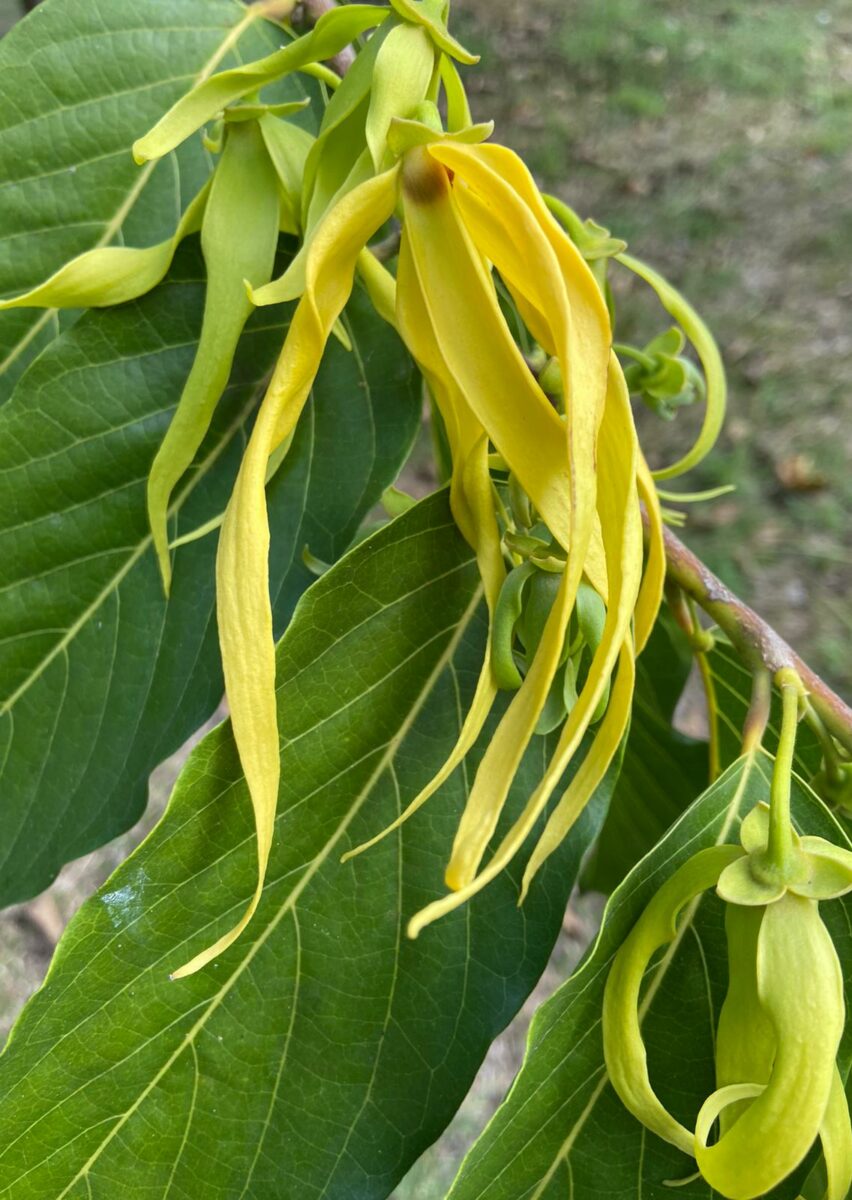
Grace Gloria Denis, Salicornia
Salicornia are halophytic plants thriving in highly salinated contexts such as marshes, beaches, and mangroves. Known to be the only plant within the ecosystem of a marsh for which salt is imperative for its growth, Salicornia are edible plants native to North America, Europe, Central Asia, and Southern Africa that possess a multitude of capacities beyond the comestible. Salicornia has been implemented as animal feed, vegetable oil, biodiesel, cosmetic products, and glass production while also being revered for its role in environmental preservation due to its phytoremediation capacities. During a 16th-century resurgence in glassmaking, Salicornia was used as a source of sodium carbonate and thus garnered the name glasswort.
Contemporary cultivations of the plant explore Salicornia as a cash crop in saline agriculture, as well as a resource in the fabrication of biofuel. The word samphire is a corruption of the name “Saint Pierre,” the patron saint of fishermen, alluding to its prevalence amongst coastal habitats.
Nathalie Muchamad, Ylang ylang
Cananga odorata is a tree native to the tropical Indo-Pacific. It has long been cultivated for its strongly perfumed flowers and is grown widely in the tropics, including in plantations for the production of essential oil. Vernacular names for Cananga odorata in two Asian languages have been used internationally in both common and scientific nomenclature. The Malay name kenanga (or cananga in pre- standardised spelling) has been borrowed for the generic name. The Tagalog name alang-ilang or ilang-ilang has been used widely in the Spanish spelling variant ylang-ylang as a common name for the plant or more particularly for the essential oil, which is widely used in perfume manufacture.
When I arrived at Mayotte 3 years ago, I discovered that the symbol of the island is the ylang-ylang flower. In the colonization era, they used to produce essential oil for the perfume industry. Despite this past, the population kept the flower for the symbol of Mayotte called “the perfumed island”. You can also find Jasmine flower, frangipane and cinnamon in everyday use. This flower originates from the Malay archipelago and arrived in the Comoro Archipelago—where I now live—through French colonization. The flower became the representation symbol of the island and women create different geometric symbols inspired by the ylang-ylang flower that they also draw on their faces as a ceremonial act.
I found in this flower a metaphor of my own history. As a visual artist, I started a project called “the ylang-ylang project” with which to tell the history of forced labour linked to the plantations “overseas”. In this story is an echo of my own family who arrived from Indonesia as forced laborers in New-Caledonia for the coffee plantations. Born in NewCaledonia, I grew there like a ylang-ylang tree.
-
Correspondence
